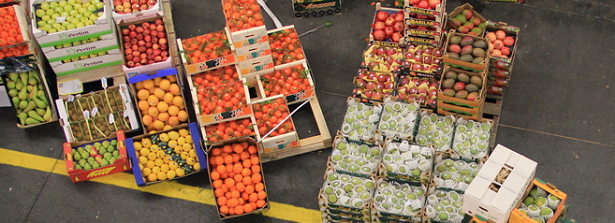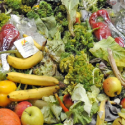Agrofood supply chain efficiency for food and nutrition security

The international conference No More Food to Waste – Global action to stop food losses and food waste – was held in The Hague, the Netherlands from June 16-19, 2015. It brought together global leaders from international agencies, businesses, investment groups, research institutions and civil society. During the symposium they could share their experiences and partner in the field of the reduction of food loss and waste throughout the supply chain while improving the sustainability of the food system. During this event, the Postharvest Network1 together with the Food & Business Knowledge Platform (F&BKP) organized a side event on Thursday June 18 on the topic of Agrofood supply chain efficiency for food & nutrition security.
Introduction
The Postharvest Network highlighted that food loss occurs along every step of the food supply chain, from the field to the market. Prevention of postharvest losses is complex since it is a multi-actor food supply chain problem. Individual actors often do not have the authority, the capacity nor the will to solve the problem. The need to focus on more comprehensive change was highlighted in a recent F&BKP study that examined the relationship between the reduction of postharvest losses and food security. The main study conclusion found that reducing the wastage issue in order to improve food security couldn’t be solved in a single stroke. Interventions, although important, do not make enough of a significant contribution in their own way. However they can do so when embedded in a broader and integrated value chain or food system approach with an eye on context-specific circumstances. In line with this conclusion, the side event was initiated to focus on opportunities in enhancing supply chains in emerging economies and developing countries.
Cases
Paul van de Lande (Amsterdam Consultants) and Marjolein Jordans (ArgusI) presented two cases from the West that could serve as an example for low income and emerging economies. The examples showed how integrated logistic improvements created a reduction in food wastage throughout the supply chain. One case was from fresh onion international supply chain, for which a higher containerisation and the integration of chain functions reduced losses and increased efficiency. The other case introduced a different kind of optimization of horizontal collaboration in a supply chain in France. In the example, competitive suppliers worked together to increase road efficiency by sharing warehouses and truckloads with the aim to minimize their environmental footprint.
Peter Ravensbergen (Wageningen UR) gave his account of experiences with improving chain efficiency in low- and middle-income countries (LMICs). Important to consider, Ravensbergen shared, is that systemic waste reduction is not only in need of technical solutions, but value chain efficiency is also dependent on the way we organize. The hardware (technical approach), the software (level of skills) and the orgware (how do we organize) need to be combined to increase efficiency in value chains.
Ravensbergen showed that per situation different “drivers of change” could be identified. In a case in Mexico, a family farm that was supported by the government was the change maker by investing in storage capacities and looking into new shipping possibilities. In a case in India, a private sector company provided warehouses for apples, which created empowerment and ownership for local farmers. An attendee highlighted an additional catalyst in a case from Indonesia where the government co-financed a system of cool chains in order to facilitate the role of the private sector for a more effective value chain.
Conclusion
One of the most important challenges addressed during the session was that when food losses occur in a supply chain, there is not one single problem or owner to address. A typical supply chain involves several actors and there is no one actor that is responsible for the total supply chain. Comprehensive chain alliances are thus of importance. For the reduction of losses and value chain improvement, actors in the chain – input suppliers, producers, traders, processers, retailers, but also the government – need to collaborate and different expertise like cooling, processing, logistics, will be required. To be able to understand the preconditions for change in the supply chain for reducing losses and improving food security, combining learned lessons was mentioned as a viable next step.
Footnotes
- 1. The Postharvest Networks links businesses, co-operations and governments to Dutch expertise, knowledge and products to minimize food losses in the agrofood supply chain.






